When a person has just started a business, they look forward to receiving any phone call, happily count every like on their social media pages, and are delighted to receive a comment with the short word “price”. It is only over time when they realize that general attention to a brand, company, or product does not necessarily translate into a specific order and money in the business owner’s account.
What does this mean? It only means that you need to focus your efforts not on everyone at once, but on a specific target audience.
Who is the target audience?
Look at the ratio of the Ukrainian population to Internet users. As you can see, it is no longer the same. If you work and launch advertising campaigns via the Internet, you can safely cross out some of the people who do not use the global network.
Let’s move on. Among the variety of Internet users, there are those who will not be 100% interested in your offer. For example, if you sell a product or service that costs a lot of money, children, teenagers, and the unemployed are unlikely to be your audience.
Hence, we conclude that you need those who, by their level of education, interests, profession, problems, achievements, material wealth, etc., are willing and able to become your customers.
Thus, the target audience is only those consumers whom you can reach with your marketing efforts and advertising campaigns and get results in the form of sales. Otherwise, you may get a lot of traffic due to, for example, an extremely creative approach to advertising, but it will be of no use.
Target audience, leads, customers — what is the difference between them?
As we have already found out, the target audience is all those who, based on their interests, needs, requests, etc., may potentially be interested in your offer. By the way, when working with the target audience, it is important to both monitor their existing needs and, on your part, shape lifestyles that can become an example to follow.
Leads are specific, but not yet potential customers who have shown interest in your product or service by completing a certain step:
- filled out a form;
- wrote to the mail;
- added a product to the cart;
- made a phone call, etc.
A lead can be:
- “quality” — someone who is really interested in your product;
- “no” — someone who accidentally came to look or found out that your offer does not meet their needs.
Customers are “quality” leads who have bought your product or paid for a service. By the way, some of them start using the product and become consumers, while others remain customers. This division is important at the stage of evaluating the customer experience, which simply customers will not be able to provide.
An ideal customer — how to draw their portrait?
Let’s go back a bit to the target audience. Usually, to determine it, you rely on the following information:
- gender;
- age;
- level of education;
- social class;
- place of residence;
- purchasing power;
- consumer habits.
Let’s say, as a result, we come to the conclusion that your target audience is women in their 30s and 40s who:
- live in cities with a population of more than 500,000;
- have at least one higher education;
- are married and have 1–2 children;
- run their own business or hold a managerial position and earn an income of $1,000 to $3,000 per month;
- prefer an active lifestyle and are fond of sports.
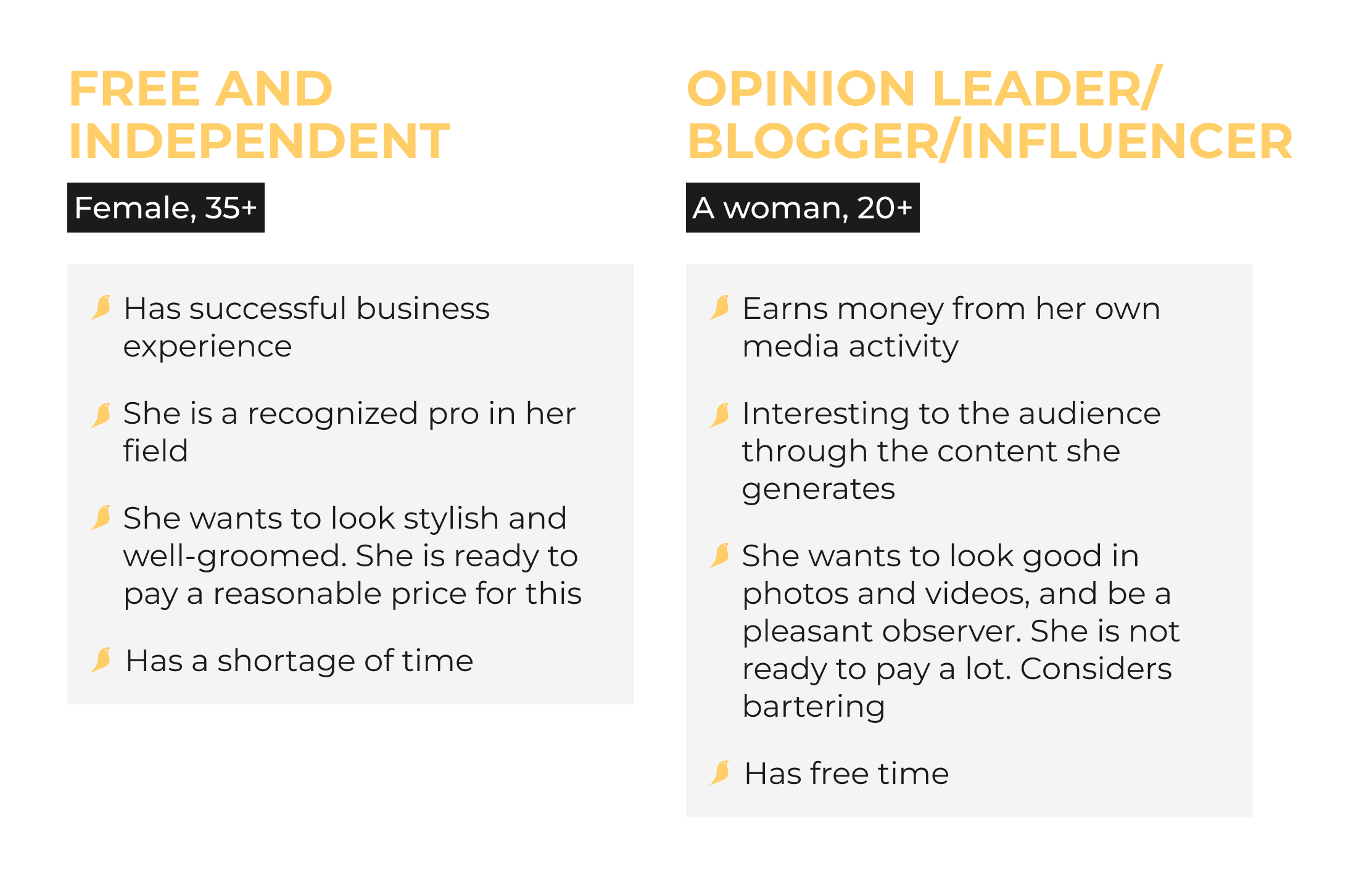
But which of them will really be interested in your offer and become a client? To find out, you need a detailed customer portrait — the creation of a specific persona. The difference between a general description of the target audience and a detailed customer profile is about the same as between a girl or boy on a first date and a person you’ve been married to for many years.
By the way, marketers joke that at the beginning of a business, the ideal client always seems better than it turns out to be in the course of developing the relationship. It’s a bit like family life, isn’t it?



As you can see, a persona is a detailed customer profile that includes not only general data, but also personal traits, character, habits, fears, dreams, past experiences, and future plans. Needless to say, a persona even has its own name! When you see a real person in front of you, you clearly understand:
- how your proposal can be useful to them;
- how to talk to this person;
- how to present your brand or product.
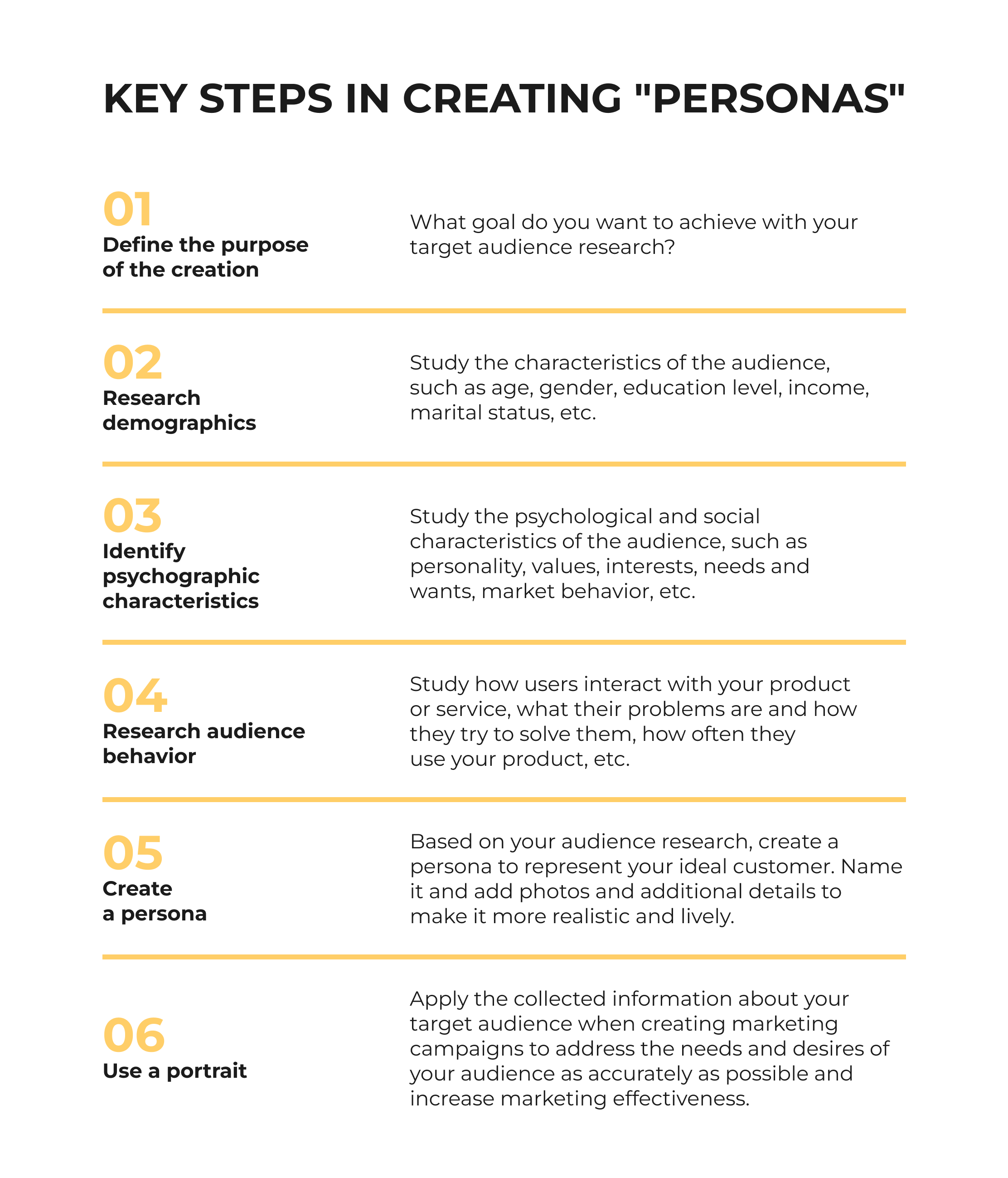
Who needs to know their target audience and why?
Anyone who wants to turn ordinary traffic into real profit. To do this, you need to:
👍 create a unique selling proposition (USP) in which a potential buyer will recognize themselves;
👍 choose the right channels through which you can convey the USP to consumers;
👍 develop and segment an advertising campaign so that it would ensure the highest possible conversion rate at the lowest possible cost;
👍 build long-term relationships with customers;
👍 build loyalty to the brand and gradually attract a new audience through this loyalty.
To do all this, you really need to study your target audience. But there is one “but” — it is important not to overdo it. Because if you focus too much on your target audience, you risk:
👎 narrowing your audience too much;
👎overlook other opportunities to expand your customer base;
👎as a result, slow down or even stop business development.
Therefore, when studying potential customers in detail, use the knowledge gained more as a basis for further actions and do not forget to review the target audience from time to time.
How to analyze the target audience?
The first analysis should be conducted at the stage of developing a business idea, while studying the features of the market you plan to enter. Later on, you should make a schedule for reviewing the target audience. It can be specific dates, time periods, or moments of achieving certain performance indicators.
Here are a few tips on how to better analyze your target audience.
- Don’t create too narrow segments, otherwise you may find yourself in a situation where it’s too much fun to shine the light.
- Set specific goals and evaluate the results by how much your efforts help you achieve them.
- Don’t limit yourself to just one channel to reach your target audience, but rather choose a multi-channel strategy.
- Use effective tools for collecting information and analyzing: main and additional channels, special services.
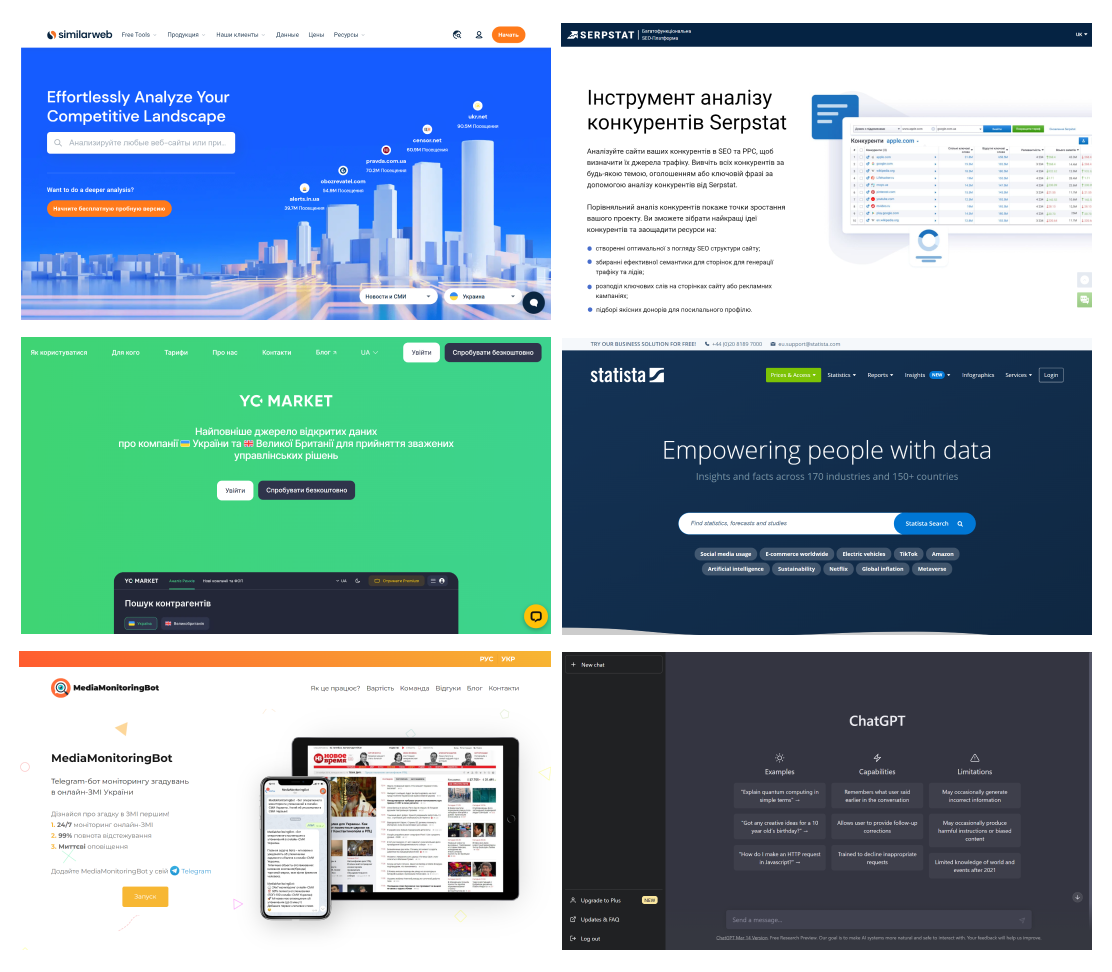
Channels of information about the target audience
Google Analytics is an important source of information. Website owners will find here data about visitors, i.e. people who are interested in your product. You can find out the following:
- age, gender;
- place of residence/stay;
- peculiarities of behavior;
- key interests;
- information about the systems and mobile devices used;
- sources of the main traffic.
Keep in mind that in order to obtain useful and relevant information from a website, it needs to have a large number of visitors. For example, due to high positions in search engine results or advertising. Because if your website is visited mainly by five team members and ten random people during a month, there is no point in talking about any kind of data representativeness.
There is one more important point. If you want to collect data specifically about your target audience, you need to make the appropriate settings. That is, you should collect information about leads, those who have completed a targeted action, for example, left their phone number or email.
To learn more about your audience, you can also:
- conduct social media surveys and interviews;
- research discussions in communities of interest;
- use statistical research data.
It also doesn’t hurt to research competitors. For example, many companies publish user stories on their websites. From them, you can understand who the company’s audience is.
Similar information can also be found in reviews. For example, they often say how they found out about the company, what kind of request they had, etc.
This knowledge will help you create personas for your product.
It’s also a good idea to turn to online services for studying the target audience.
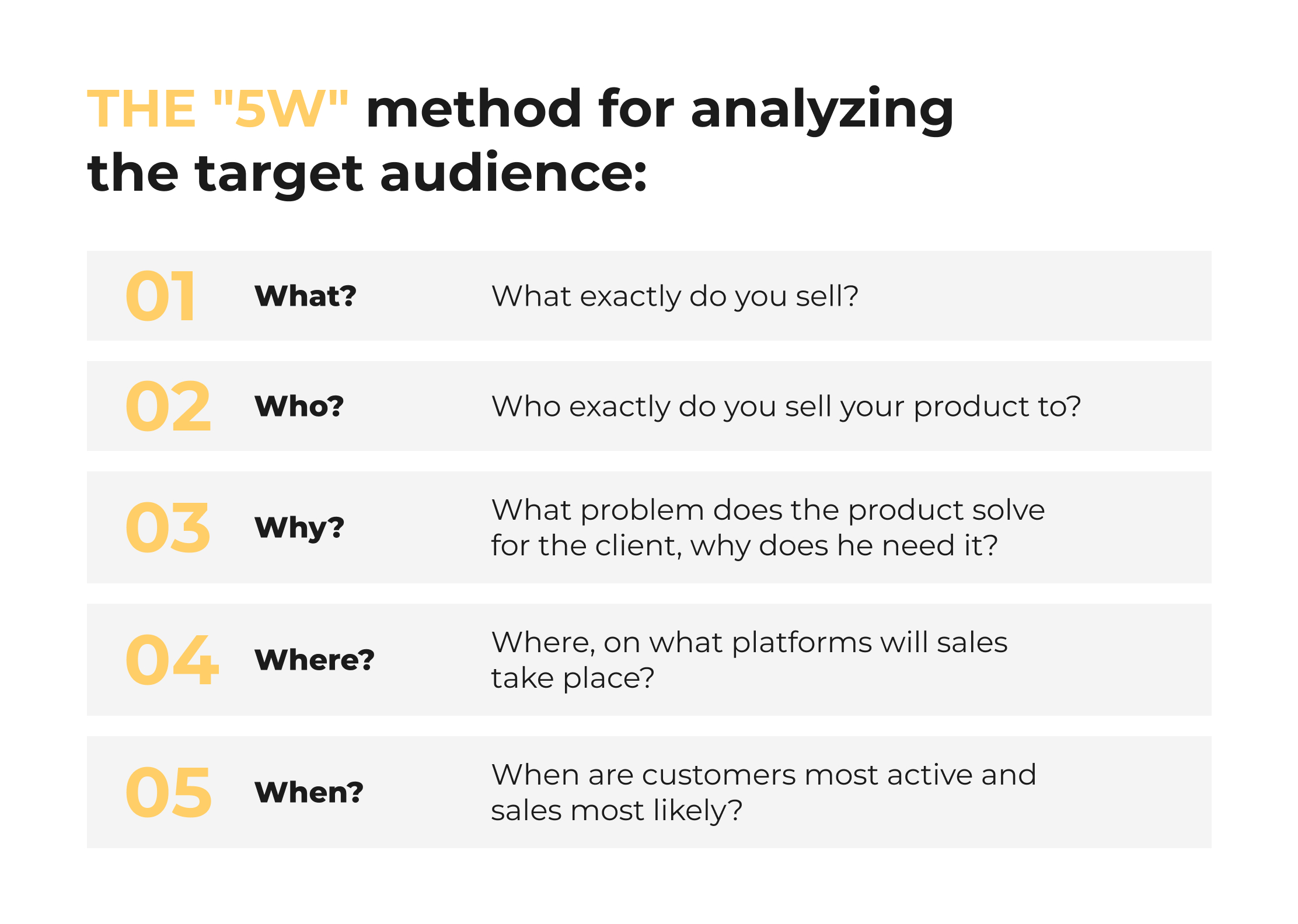
What is target audience segmentation, and why is it needed?
Marketing data confirms that brands which have established good interaction with potential customers earn 5.7 times more profit than those that have not paid enough attention to this work. To communicate better with customers, you need to know them better. To do this, you need to divide the overall target audience into relatively small homogeneous groups, i.e. segment it.
How to segment the target audience?
Segmentation can be based on:
- demographic data;
- behavioral characteristics;
- place of residence;
- interests, etc.
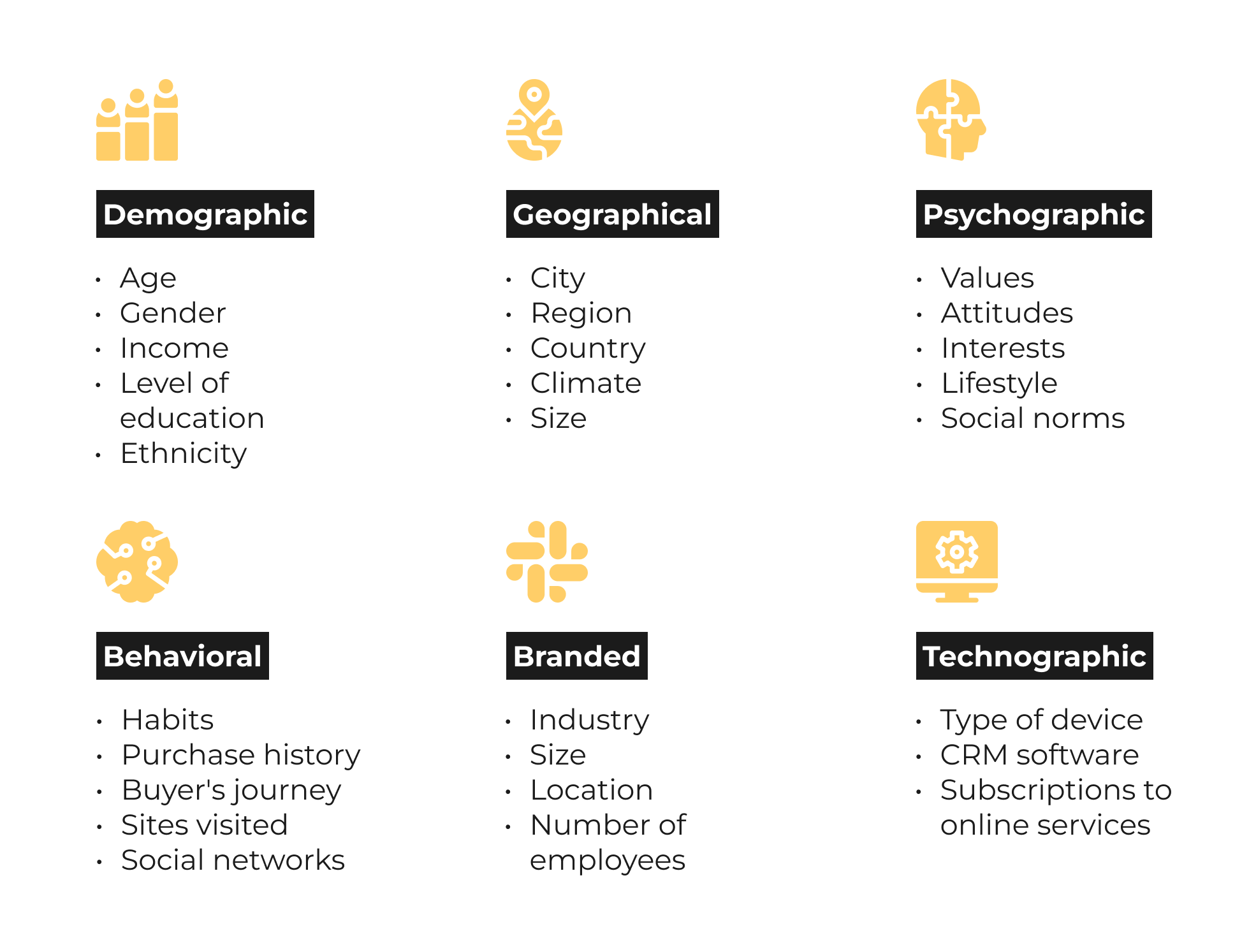
A classic example that everyone knows is a clothing store divided into departments for women, men, girls, and boys. It’s a simple but clear example of segmentation by age and gender. Accordingly, advertising for each of these 4 audience segments will be different. By the way, all consumers who are interested in children’s clothing can be divided into 2 other segments — parents and children.
Segmentation cannot be done once and for all, it is an ongoing process. Sometimes it can take years for a young company to accurately define its target audience and precisely divide it into segments. It is also worth considering that social, political, and economic changes have a significant impact on people, which leads to changes in target audience segmentation.
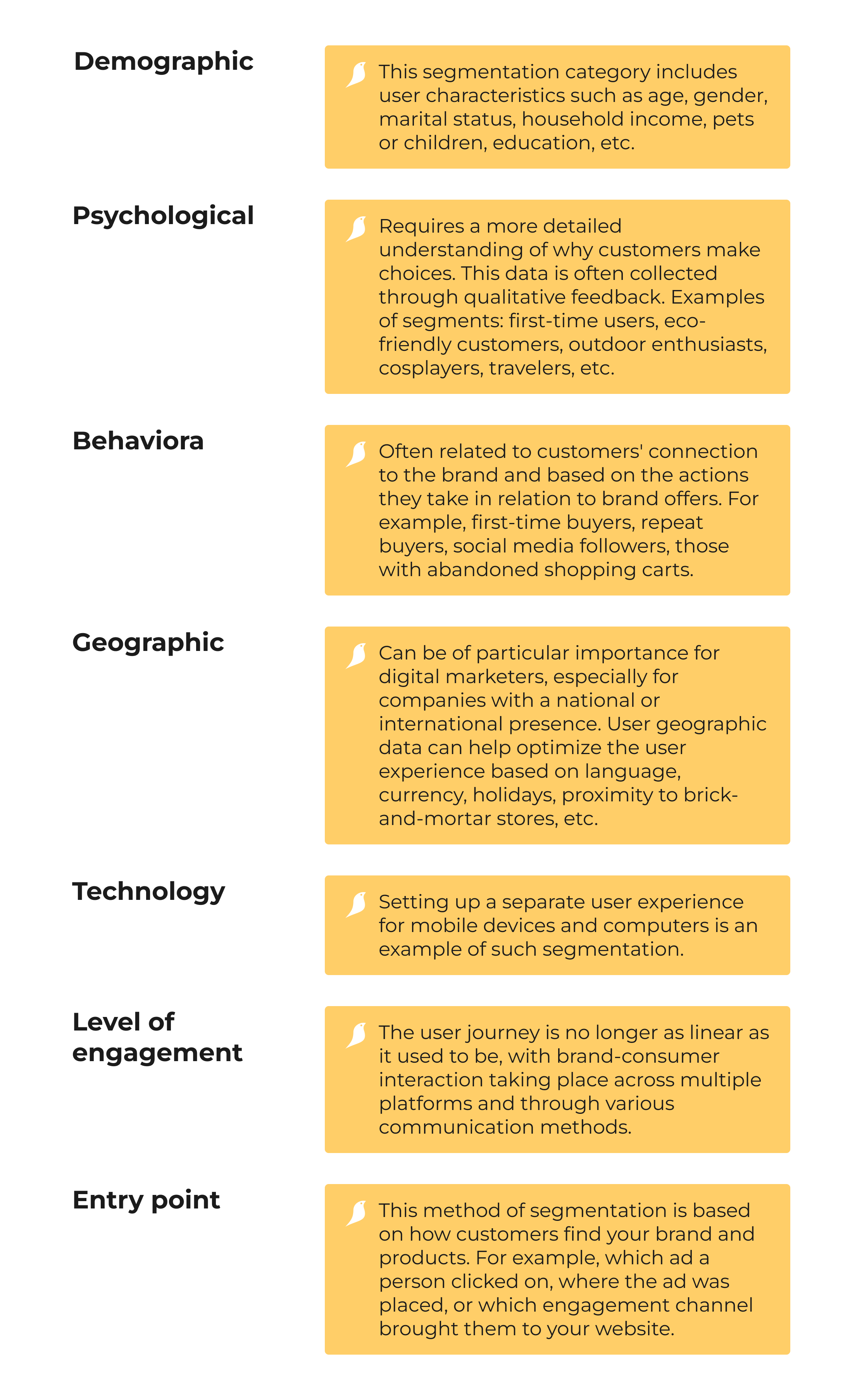
Instead of a conclusion
By studying and dividing your target audience into segments, you can better adapt your marketing campaigns to the needs, desires, and capabilities of different consumer groups. According to statistics, 77% of ROI in marketing depends on the correct segmentation of the target audience.
That is, segmentation is primarily a tool for improving the efficiency of customer service. It allows you to:
- make the offer more personalized;
- increase audience loyalty;
- optimize the marketing budget by understanding the behavior and speed of decision-making in certain segments.
Segmentation also makes it possible to identify additional needs of people and offer them a new product or find the shortcomings of a product already on the market and eliminate them.
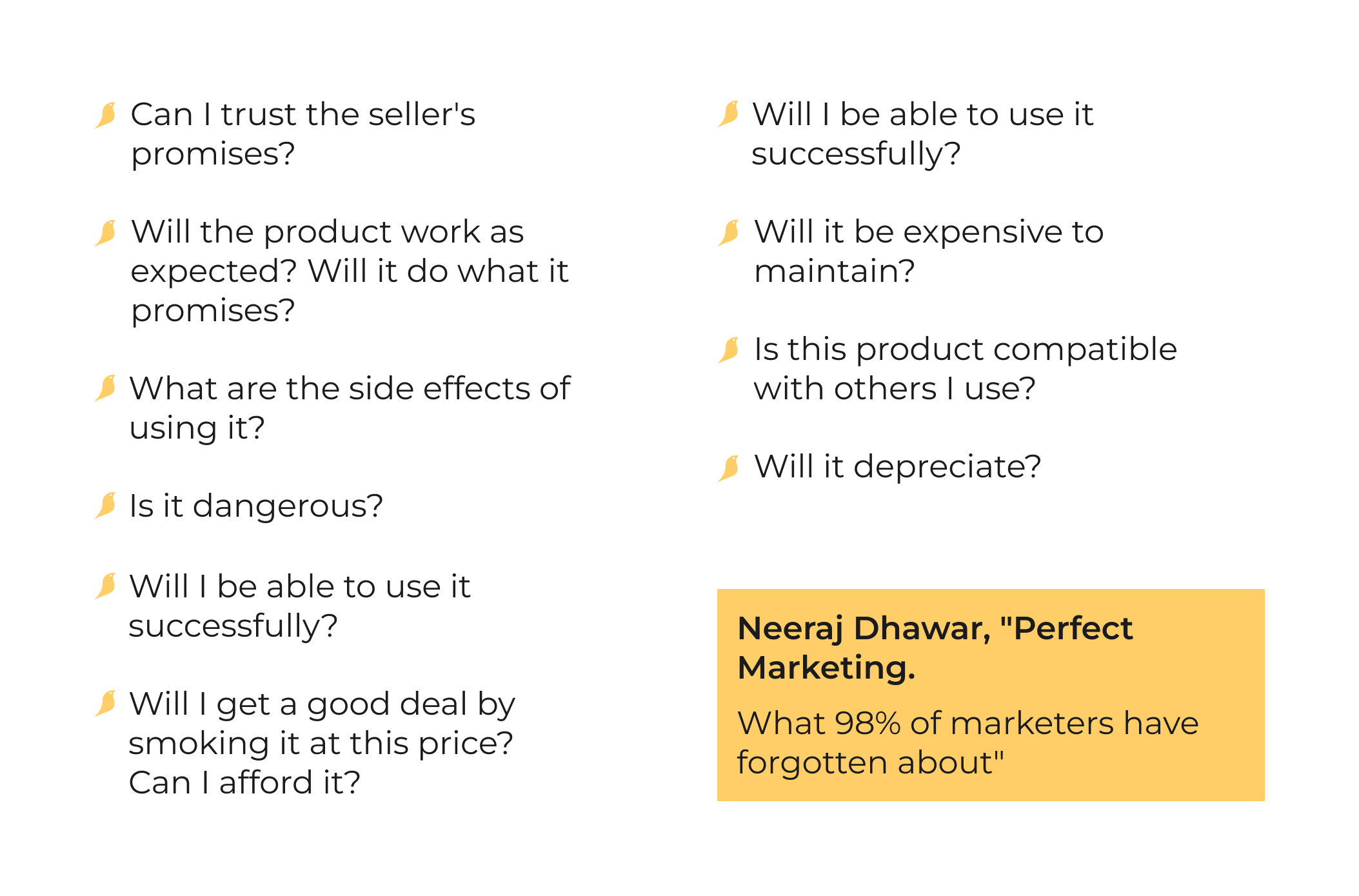
In short, the deeper you get to know and feel your audience, the more accurate your offer will be, the better it will meet the needs of the buyer, and therefore the higher your chances of selling and, consequently, your profits.






